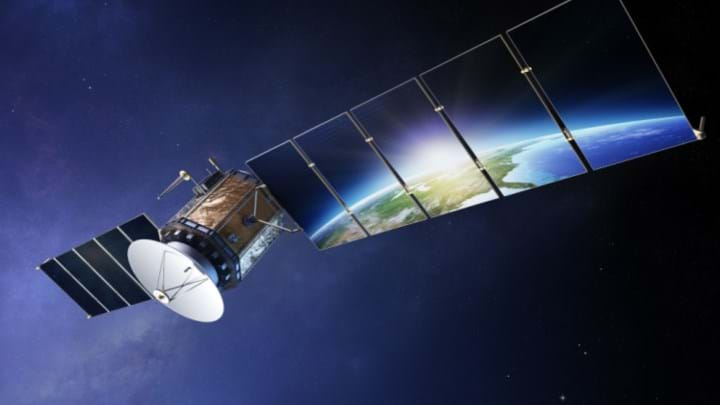Solar farms in space demo could be ready by 2030

A PLAN to use satellites in Earth’s orbit to harvest the Sun’s energy from space and beam it down to Earth using microwaves could be up and running as early as 2030, with the first-of-a-kind operational system delivering power into the grid by 2040.
The concept of harvesting solar energy in space is not a new one, but until now, high launch costs and limited technology have hampered progress, said Space Energy Initiative (SEI), the organisation behind the solar farm project.
However, recent developments in reusable rockets, and more modular SPS concepts, coupled with benefits that include clean, continuous base-load energy day and night, through all seasons and weather, and with much lower land usage than conventional renewables, is helping the idea gain traction. And with the potential of each satellite to beam around 2.9 GW of net power to a receiving antenna at a fixed point on Earth, it’s a concept that has even attracted the attention of the UK Government. In July ministers announced that £3m (US$3.6m) in funding would be allocated to space-based solar power (SBSP) projects after confirming the engineering feasibility of the concept through an independent study.
But, to harvest energy comparable in power output to a nuclear power station takes a satellite that is incredibly large. According to SEI a typical system comprises a constellation of massive, kilometre-scale satellites 38,000 km above the ground in a geostationary orbit. At this range the massive satellites should not cause any problems with light pollution, SEI said.
Each has very lightweight solar panels and a system of mirrors to concentrate sunlight onto the panels, generating around 3.4 GW of electricity on the satellite. This is converted into RF microwave radiation, with an efficiency of 85%.
To allow the microwave beam to lock onto the correct point, an encrypted pilot beam is transmitted from the ground to the satellite. The maximum beam intensity is <250 W/m2, less than a quarter of the maximum sun intensity at the equator, and the system will be designed so that it is safe in the event that humans or birds or animals strayed into the beam, said SEI.
The ground rectifying antenna or “rectenna” as it is called then converts the electromagnetic energy into direct current electricity which passes through an inverter which delivers a net 2 GW of AC power into the grid.
If SEI’s project, dubbed CASSIOPeiA, goes ahead, a cost modelling analysis by consultancy Frazer-Nash shows that the LCOE (levelised cost of electricity), used to compare different methods of electricity generation on a consistent basis, falls between £37 and £74/MWh, which is competitive with terrestrial renewable technologies, the organisation said.
Where the technology benefits greatly, is its availability. Compared with solar panels on the ground which are usually able to process 15–22% of solar energy into usable energy as conditions are never perfect, a solar power satellite in GEO can see the Sun for well over 99% of the time.
The idea of solar farms in space could get another big boost as ministers at the European Space Agency are meeting this week to discuss whether to fund a three-year preparatory programme known as SOLARIS. If approved, ESA said it would work in conjunction with European industry, to assess the feasibility, benefits, implementation options, commercial opportunities and risks of SBSP as a contributor to terrestrial energy decarbonisation. A decision whether to proceed with a full-blown project could then be made in 2025.
"The idea of space-based solar power is no longer science fiction," Sanjay Vijendran, SOLARIS’ lead scientist told the BBC.
"The potential is there and we now need to really understand the technological path before a decision can be made to go ahead with trying to build something in space."
Recent Editions
Catch up on the latest news, views and jobs from The Chemical Engineer. Below are the four latest issues. View a wider selection of the archive from within the Magazine section of this site.




